Fieldbus automates oil production field
Fieldbus automates oil production fieldARCO estimates savings of $621,000 per drill siteD. Toavs, ARCO Alaska, Inc., Anchorage, Alaska; and T. Blevins, Fisher-Rosemount Systems, Austin, Texas
Background. ARCO Alaska, Inc. is responsible for exploring, developing and producing ARCO’s oil and gas interests in Alaska and surrounding offshore waters. The company is the second largest oil producer in the state and operates a major production field at its West Sak facility on the North Slope. The operating environment for instrumentation used in North Slope oil production fields is highly demanding. Temperatures between –50°F and 75°F are common. Such conditions make device troubleshooting and maintenance difficult and typically require that field instruments be installed in protective manifold buildings. Moreover, they contribute to a high cost for piping and construction. ARCO Alaska was seeking to reduce engineering, installation, operation and maintenance costs at its West Sak oil field through improved wellhead automation. Technical proposals were solicited from five potential suppliers for a scalable control solution that would not only reduce up-front capital costs, but also allow incremental expansion at minimal costs, reduce documentation and provide remote troubleshooting capability. ARCO Alaska also specified to suppliers that the control system utilize the latest industry-accepted technology. Design criteria. Specific technical criteria / goals for the West Sak project included: Reduced wiring and terminations. Previously, all wellhead instrumentation at West Sak had to be individually hard-wired. Each field analog instrument and associated connections to marshalling panels and I/O cards typically required 30–36 terminations, and each discrete point required approximately 20 terminations. Modular system design. A modular control system design was necessary to accommodate various production and injection well combinations and to limit engineering and construction changes in the wellhead area and the switchgear module. In particular, the design should permit adding single or multiple wells on the end or in the middle of well rows without redesigning the control system. Reduced maintenance costs. Although ARCO Alaska considered reductions in installed cost to be critical to the project, it viewed long-term equipment maintenance costs as equally important. The company estimated total maintenance cost to be 40% of the operating cost at West Sak and that maintenance related to instrumentation accounted for 45% of the maintenance cost. Useful diagnostic tools. At West Sak, the need for useful diagnostic tools for remote device troubleshooting is underscored by the fact that a large portion of the field instruments at the drill sites is spread out over trunk and lateral piping in severe environmental conditions. However, ARCO Alaska determined that simply implementing a networked control solution would not necessarily ensure lower operation and maintenance costs. All but one of the suppliers’ technical proposals involved the use of proprietary network buses with distributed I/O blocks from programmable logic controllers (PLCs) in the field. This control system design requires that the I/O be placed in heated panel boxes at the wellhead. The drawbacks to such "black boxes" in the field are high cost and potential maintenance problems. RTDs would be required in the boxes to measure temperature and provide alarming in the event of heater failure. Without the ability to effectively monitor the condition of end devices, technicians would be forced to open the boxes in subfreezing temperatures to perform troubleshooting or make repairs. The black box approach also creates a firewall between control room operators and the end devices, thus limiting the ability to perform remote diagnostics on equipment in the field. Fieldbus solution. After considering various alternative solutions for reducing installation and long-term maintenance costs, ARCO Alaska opted for a control strategy based on Foundation fieldbus. This all-digital, serial, two-way, multidrop communications system functions as a local area network (LAN) for field instrumentation. ARCO Alaska’s use of Foundation fieldbus is the first such wellhead automation application of its kind in the petroleum industry worldwide. Installing Foundation fieldbus at West Sak has fundamentally changed ARCO Alaska’s approach to North Slope development. The company believes early adoption of this technology will provide a competitive advantage by enabling long-term cost savings. Unlike other network bus approaches, Foundation fieldbus does not require heated panel boxes in the field to house data-concentrator electronics. Fieldbus devices are environmentally-hardened for use in severe environments, allowing all controller hardware to be located in the control room.
In phase one of the West Sak project, encompassing 32 initial production and injection wells, Foundation fieldbus is used for remote access to pressure, flow and temperature measurements at the wellhead. Also, support is provided through fieldbus for the operator to control blocking valves and to activate surface safety valves (SSVs). A new, Foundation-compliant host process automation system that includes three controllers, a user / integration station and an operator station was installed in the West Sak control room. Fieldbus devices installed at the well pads include pressure transmitters, differential pressure transmitters and electric valve actuators (Fig. 1). A key feature of the Foundation fieldbus system is its efficient, modular design. The electric valve actuators collect safety shutdown signals from the I/O in the wellhead area, and then send the data back to the host system over a single fieldbus connection. Additionally, the SSVs can be activated by control room operators directly through blocking valve actuators. The ability to drive shutdown solenoids for the SSVs through these actuators saves an average of 800 ft of power supply wire per well. The flexible control system design also allows all system software, including maintenance software, to reside in the host. This eliminates the need for third-party laptop software and allows operators to access integrated field device configuration / calibration tools in the host from virtually any location (Fig. 2). User benefits. From ARCO Alaska’s standpoint, one of the chief benefits of the Foundation fieldbus control system is availability of robust diagnostics for checking on the "health and welfare" of field instruments. These diagnostics can be accessed from either the control room or maintenance shop. The need for device maintenance can even be verified before the technician goes out to the field (Fig. 3). This benefit will be fully realized once development is completed on the West Sak fields, at which time on-site personnel will have responsibility for a total of 550 wells, 550 electric motor operated valves and 1,375 transmitters. Other benefits provided by Foundation fieldbus include:
Simplified wiring. Foundation fieldbus eliminates the costly wiring maze between remote field instruments and the control room. Instead, instrument wires run a short distance in the field to a junction box. From that box, a single fieldbus cable runs to another junction box outside the control room, and from there directly to a panel inside the control room (Fig. 4). For every four wells, there is one fieldbus "home run" wire pair between field instruments at the well and the control room. Conventional, point-to-point wiring would require a total of 46 wire pairs. Because Foundation fieldbus does not require connecting a wire pair for each instrument to a specific set of terminals on the I/O card, wire tags for individual wires to each instrument are no longer necessary. One cable tag per fieldbus cable now suffices, resulting in significant cost savings. Easier installation. The ability of a single Foundation fieldbus to handle multiple signals provides a major reduction in the number of I/O cards and terminations. This results in a 98 percent reduction in home run wiring and makes it easy and inexpensive to add new wells and home runs. Furthermore, fewer terminations frees up valuable cabinet space. The fieldbus cabinets can accommodate approximately 64 wells and yet are one-third the size of conventional cabinets designed for only 16 wells. Reduced operator time. Foundation fieldbus’ support for automated well testing also reduces operator time requirements. Operators previously spent approximately four hours per 16-well pad each week performing various production tests. With the new host system, test procedures are performed automatically, and the required operator time is reduced to less than one hour per week for a 32-well pad. In addition, technicians have found that Foundation fieldbus greatly streamlines instrument field checkout and quality assurance / control (FCO and QA / QC). The normal calibration and checkout time for a transmitter and actuators is approximately two hours per instrument. This time is reduced to 20 minutes or less with fieldbus instrumentation. Reduced engineering time. Foundation fieldbus decreases the time for adding an expansion well to the control system. The engineering design scope is now from the wellhead to the yard box, instead of the wellhead to the control room. Engineers can simply "clone" the E&I drawing for an existing well and make minor modifications. Plus, the host system’s Windows NT-based "cut and paste" programming techniques make it easy to create templates that simplify reproducing repetitive objects or processes. Results. Following a smooth start up of the Foundation fieldbus system, ARCO Alaska began oil production on Dec. 26, 1997, at its West Sak oil field. The company estimates that fieldbus, when compared with a conventional wiring and control scheme on the 32 phase one wells, will yield a total cost savings of $621k per drill site. This includes savings of approximately $206k in materials, $324k in labor, and $91k in engineering. Specific savings can be attributed to the following:
Aside from significant labor and cost savings, Foundation fieldbus has improved operating and maintenance performance at West Sak. Operators and technicians can now remotely monitor diagnostics embedded in valves and transmitters, rather than brave harsh Arctic conditions to verify proper instrument operation. In addition, fieldbus device diagnostic capabilities are proving to be valuable during commissioning and ongoing oil production. As a result of the success of the West Sak control system project, it is anticipated that many of ARCO Alaska’s future developments on the North Slope will be built on Foundation technology. Expansion of the fieldbus installation at West Sak drill sites is presently underway, and this project is serving as a model for two new developments, Tarn and Tabasco, that are expected to be the world’s fastest oil field developments. FB The authors
Copyright © 1999 World
Oil |

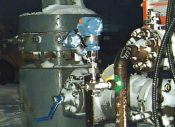
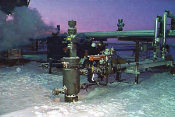
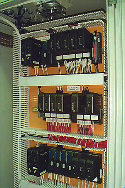
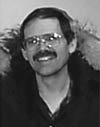 Terry
Blevins is a principal technologist for
Fisher-Rosemount Systems, Inc. He has over 15 years experience in control system design and
startup. Terry holds an MSEE from Purdue University and a BSEE from the University of
Louisville. He is actively involved in moving Fieldbus Foundation function block work into
international standards through participation in standards committees within ISA and IEC.
Terry
Blevins is a principal technologist for
Fisher-Rosemount Systems, Inc. He has over 15 years experience in control system design and
startup. Terry holds an MSEE from Purdue University and a BSEE from the University of
Louisville. He is actively involved in moving Fieldbus Foundation function block work into
international standards through participation in standards committees within ISA and IEC.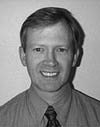 Duane
Toavs is a staff engineer, Kuparuk Projects E&I
Technical Coordinator for ARCO Alaska, Inc. He has over 20 years of control system
engineering experience. Duane has been a professional engineer and a member of ISA and the
Fieldbus Foundation since 1993. He holds a BS degree in electrical engineering from the
University of Idaho.
Duane
Toavs is a staff engineer, Kuparuk Projects E&I
Technical Coordinator for ARCO Alaska, Inc. He has over 20 years of control system
engineering experience. Duane has been a professional engineer and a member of ISA and the
Fieldbus Foundation since 1993. He holds a BS degree in electrical engineering from the
University of Idaho.
